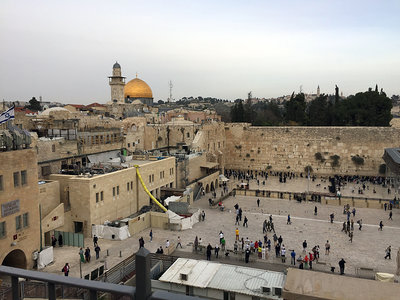
“They didn’t just kill Rabin, they didn’t just shoot the messenger. They killed the concept of peace,” my friend proclaims over Shabbat dinner in Tel Aviv. “The sad part is that they succeeded — the right wing. They killed Rabin and got what they wanted. Look at Israel now.”
This past month marked the 20th anniversary of the assassination of Yitzhak Rabin, perpetrated by a Jewish extremist opposed to the prime minister’s instrumental work on the Oslo Accords, aiming to realize a Palestinian state alongside Israel. Since the November 1995 murder, a stagnant and ineffective peace process has supplanted hope with futility, now entrenched by violence.
Many regard post-Rabin, right-wing support of a two-state solution, particularly under Netanyahu, as disingenuous: rhetoric belied by the policies of occupation, driving Palestinians into further despair — and a handful into the depths of violent radicalization.
While not defended or justified, their martyrdom can be comprehended. These Palestinian youth wake up to the realities of destitution and a starved economy, to encroaching settlements, to collective punishment (home demolition) and a disparate justice system.
Amid this, they are to believe the promise of peace and sovereignty that has now sat idly for their entire lives. They see an Israeli government that repudiates placation and pursues deterrence by force, a paradox that many Jews worry will ultimately spur a regional revolt resolute on the extermination of Israel.
But other Israelis — perhaps the majority — see the issue differently. My athletic trainer bluntly conveyed his frustration with “the Arabs” recently: “There will be no peace — but it is because of them … You see these 11-year-olds with knives? These people are crazy! Kill all the terrorists!”
His animation was genuine; his articulation was impaired by visceral emotion. He discussed his experience as a soldier evacuating Israelis from Gaza and leaving it under Hamas control, which soon began to bomb Israel. He worries, as many do, that the same fate would define Palestinian control in the West Bank. He sees a people who cannot civilize and prosper when ostensibly afforded the opportunity, pointing to political corruption and penury in Palestinian-controlled lands.
On a train ride last week, I met a teenage combat soldier returning back to his base. He blamed religion — not his, of course — for the lack of hope. I asked if his brigade often discussed the political situation. He was callous, yet matter-of-fact: “Yes, but most of them just want to kill as many Arabs as they can. Many think they all should be dead.”
While the brigade’s extreme views clearly do not represent those of most Israelis, they comport with the pervasive narrative that the enemy is a barbaric, Oriental “other” that must be contained — that, after all, there is no partner with whom Israel can negotiate. But, of course, Palestinians are no more inherently inclined to wield a weapon than Islam is innately violent; no nationality or religion demands terror — people do.
I recently visited Jerusalem’s Old City. It was surreal, but not because I saw physically awe-inspiring edifices, as I had imagined. Without a religious upbringing, I intellectually appreciated the sacred significance of these landmarks, but I strained to fully grasp the holy value of sites that appeared so pedestrian. The physical circumstances, however, outside the Old City — the contrast of Palestinians and Israeli neighborhoods — struck me immediately. Manicured hills juxtaposed with mountains of trash. Minted shopping malls compared to dilapidated markets. Grandiose Stars of David versus a torn Palestinian flag dangled on a street cable.
My impressions inside and outside the Old City represented a microcosm of the Israeli/Palestine issue, writ large: It is a turf war defined by socioeconomic disparities that have subsumed a religious dispute into an otherwise solvable political issue.
As Daniel Seidemann, an expert on Jerusalem developments, recently explained: “Nothing guarantees the outbreak of violence as much as the real or perceived threat to sacred spaces … But the Temple Mount is the detonator, not the explosive device. Violence is sustained by the perceived loss of the two-state solution.”
I do not discount the hopelessness surrounding an issue that feels so intractable, particularly since Rabin’s death. But as an American-Israeli without deflating, years-long witness to violence and division, I am also reminded that the conflict, at base, is geopolitical — and therefore peace is possible.
The best course of action, it seems, remains a two-state solution, although I do not profess a unique solution. I relish the opportunity to continue engaging with this issue — and I welcome all dialogue, from here in Israel, or from back home in Eugene.
— Hayden Rooke-Ley